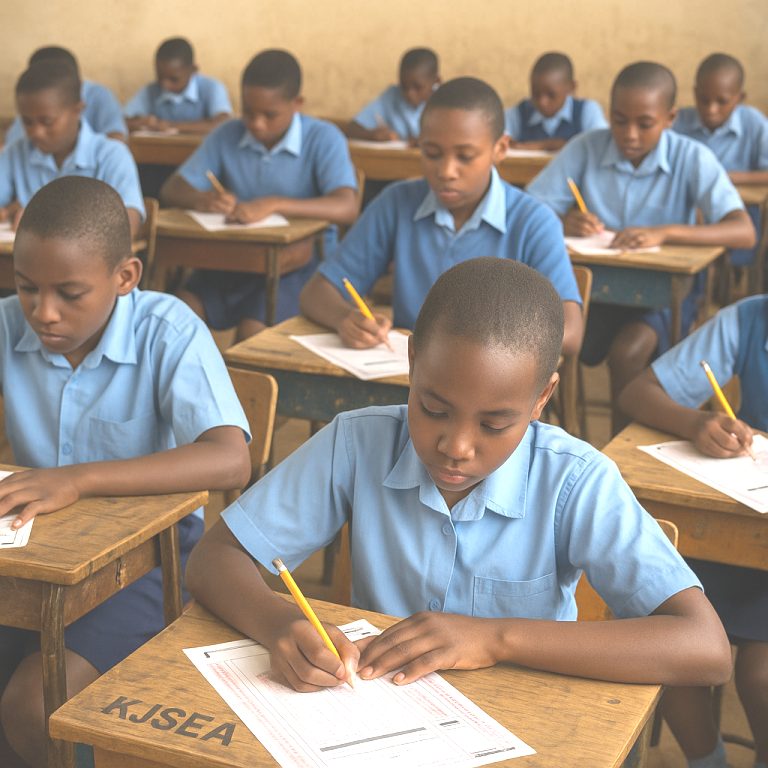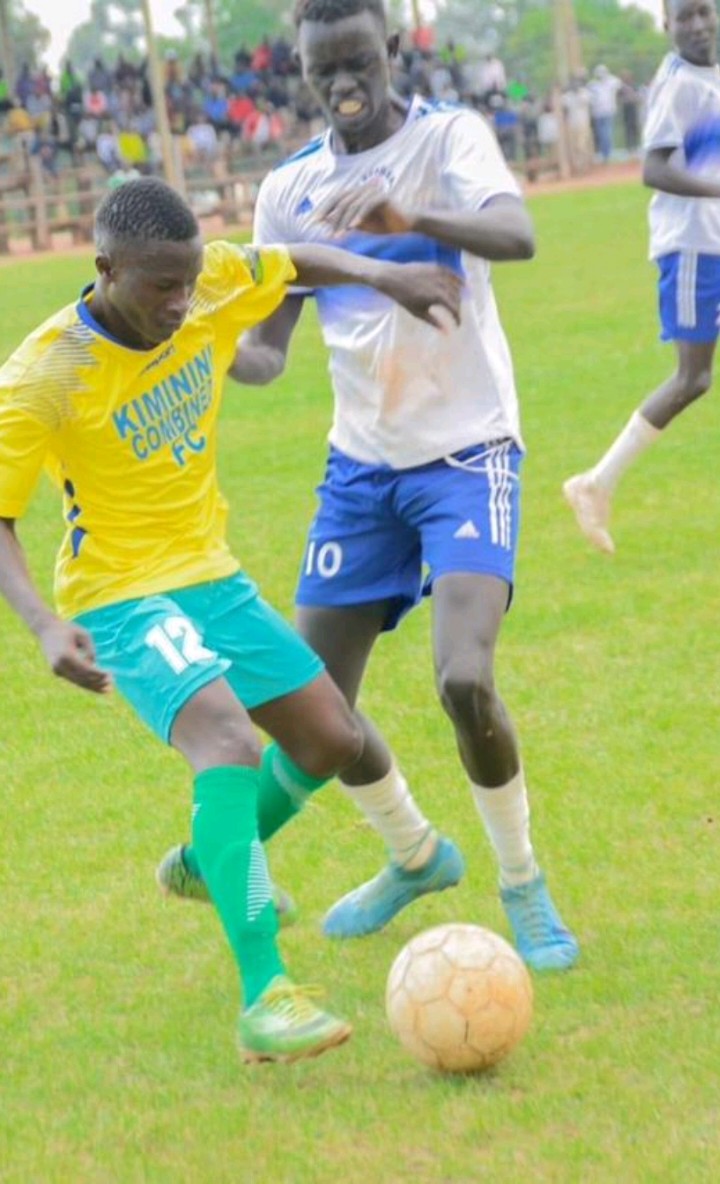Education has long been described as the heartbeat of national development and the key that unlocks both personal and societal transformation. It is the mirror through which a country measures its progress and the foundation upon which future generations build their dreams.
Yet, in Kenya, the release of national examination results has become more than just an academic event — it has evolved into a season of celebration, anxiety, and, unfortunately, rivalry.
Each year, when the results for the Kenya Certificate of Secondary Education (KCSE), Kenya Junior School Education Assessment (KJSEA), Kenya Primary School Education Assessment (KPSEA), and even Diploma in Teaching and ECDE programs are released, schools and colleges across the nation brace themselves for the storm of comparison and competition that inevitably follows.
The entire education fraternity — learners, teachers, parents, and administrators — finds itself caught in an unspoken contest to prove superiority. Newspapers publish lists of top-performing schools. Radio stations and television broadcasts host interviews with the best students, and social media platforms buzz with congratulatory messages from institutions proud of their rankings.
On the surface, this appears to be a celebration of excellence. However, beneath the glamour lies a deep-seated culture of rivalry — a rivalry that has slowly reshaped the way education is perceived and practiced in the country.
The Celebration and the Competition
Whenever the Cabinet Secretary for Education announces that national examination results are ready, excitement grips the nation. School gates fill with hopeful students, teachers, and parents waiting to see how their institution has performed.
Moments later, phones buzz with text messages containing results, and in minutes, the country is awash with comparisons.
Schools that perform well are celebrated and praised. Some organize motorcades, thanksgiving services, and processions to showcase their achievement. Principals, especially from schools that produce the best candidates, are featured in newspapers and television interviews, hailed as visionary leaders.
For these institutions, the results serve as a marketing tool. They print banners, hang congratulatory posters, and share success stories online, declaring themselves “centers of excellence.” Enrolments increase, donations rise, and prestige grows.
Meanwhile, schools that perform dismally retreat into silence, their teachers demoralized and their reputation bruised. The focus shifts from the learning process to the end product — the grade. Education becomes a contest where the only measure of success is who scores higher, rather than who learns better.
Rivalry in Secondary Schools
The secondary school level is arguably the most competitive stage in Kenya’s education system. KCSE results carry immense weight because they determine university placement, scholarship opportunities, and even the perceived status of a school.
Every year, schools compete fiercely for positions in the national ranking. National schools such as Alliance, Kenya High, Kapsabet Boys, and Mang’u High often dominate the headlines, leaving county and sub-county schools scrambling for recognition.
The rivalry between these schools is not just academic but reputational. Principals are evaluated based on mean scores, and teachers’ performance is tied to student outcomes. Some administrators feel that their career progress depends entirely on exam results.
This intense competition, though motivating, sometimes takes an unhealthy turn. Cases of exam irregularities, teacher burnout, and student stress are often linked to the pressure to perform.
In the race for prestige, some schools resort to unethical behavior — from leaking examination materials to manipulating internal assessments. The obsession with grades overshadows the holistic purpose of education: nurturing well-rounded, morally upright, and creative citizens.
Rivalry in Junior and Primary Levels
The introduction of the Competency-Based Curriculum (CBC) brought about assessments like the KJSEA and KPSEA, which focus more on learner competencies than mere memorization.
However, even these assessments have not escaped the spirit of competition. Schools still compete for top positions, often reducing the assessments to another ranking exercise.
At the primary level, rivalry is most visible between private and public schools. Private institutions often pride themselves on high results, modern facilities, and strong parental support.
Public schools, on the other hand, struggle with limited resources, large class sizes, and infrastructural challenges — yet they are constantly compared with well-funded private schools.
Parents, in pursuit of better results, transfer their children from one school to another, unintentionally creating instability and pressure on learners.
In some regions, schools within the same sub-county or zone engage in silent battles, each determined to outperform the other.
The sense of community that once defined education is fading, replaced by isolation and competition. Teachers, rather than sharing ideas or collaborating on improvement strategies, guard their methods jealously, afraid that their rivals might outshine them.
Competition Among Teacher Training Colleges
Rivalry is no longer limited to basic education; it has found its way into teacher training institutions. Colleges offering the Diploma in Teaching and ECDE programs are now part of the race for recognition.
Each year, when results are released, teacher training colleges proudly advertise their success rates. Institutions that post impressive results claim to be producing the “best teachers in the country.” Their graduates are paraded as evidence of superior training quality.
While competition can indeed drive improvement, it can also distort priorities. Instead of focusing on practical skills, pedagogy, and innovation, some colleges concentrate on exam results to boost their reputation.
The situation is similar in ECDE colleges, where rivalry arises from attempts to produce the “best” early childhood educators.
This competition, if left unchecked, could undermine the core objective of ECDE training — nurturing compassionate, patient, and creative teachers who lay the foundation for lifelong learning.
It is ironic that institutions preparing future teachers sometimes mirror the same unhealthy competition seen among schools they are meant to guide.
The Role of Parents and the Community
Parents play a critical role in fueling or calming school rivalry. Many parents, out of genuine love and ambition for their children, evaluate schools solely based on performance statistics.
They want their children in the “best-performing schools” and may withdraw them from institutions they perceive as weak. This behavior, while understandable, often places immense pressure on teachers and learners.
Communities, too, have turned academic results into matters of prestige. Villages and towns celebrate schools that perform well as if they were sports teams winning a national league.
The pride that comes with producing a “national top student” is immense, but it also creates an environment where schools feel compelled to compete for fame rather than focus on education as a collective social good.
Media and Political Influence
The media and politicians also contribute to the intensity of school rivalry. When results are released, headlines such as “Top 100 Schools in KCSE” or “Best Performing County in KPSEA” dominate the news.
Such rankings amplify competition by giving the impression that success is measured solely by grades.
Politicians, on their part, associate themselves with successful schools, attending prize-giving ceremonies and promising support, while neglecting struggling ones.
This further widens the gap between high-performing and low-performing institutions.
Schools that do not make headlines are forgotten, yet they might be the ones making the greatest difference in the lives of underprivileged learners.
The Psychological Cost of Rivalry
The psychological cost of excessive rivalry cannot be ignored. Teachers face burnout as they push students to meet unrealistic expectations.
Learners suffer anxiety, stress, and in extreme cases, depression, when they fail to meet school or parental expectations.
Education becomes a burden rather than a journey of discovery.
This pressure also extends to administrators, who fear transfer or disciplinary action if their institutions perform poorly.
Such an environment breeds fear rather than passion for teaching and learning.
Instead of schools working together to identify challenges and share solutions, they isolate themselves, creating a fragmented education system.
When Rivalry Becomes Healthy
Despite its challenges, not all rivalry is harmful. Healthy competition can be a catalyst for progress.
Schools that benchmark positively with others often improve their performance, teaching quality, and learner motivation.
Teachers inspired by successful peers adopt innovative methods and strengthen their professional practice.
For rivalry to remain healthy, it must be guided by integrity, transparency, and mutual respect.
Schools should not see each other as enemies but as partners striving toward a common goal — educational excellence.
Competitions that celebrate innovation, community engagement, and holistic learning can replace those that glorify grades.
Principals, headteachers, and college administrators hold the key to transforming rivalry into collaboration.
Effective leaders understand that true success lies not in defeating others but in continuous improvement.
A principal who motivates teachers, empowers learners, and fosters teamwork will achieve sustainable success without resorting to destructive competition.
Leadership should focus on creating environments where teachers share resources, learners are encouraged to collaborate, and schools support one another through mentorship and exchange programs.
For instance, high-performing schools could pair with emerging ones to offer guidance, share materials, and build a culture of mutual growth.
The Way Forward
To restore balance in the education system, Kenya must redefine the meaning of success.
Academic performance should not be the only yardstick of excellence. Creativity, innovation, discipline, emotional intelligence, and problem-solving abilities should also be recognized and rewarded.
The Ministry of Education and the Teachers Service Commission (TSC) should design policies that discourage excessive ranking and instead promote mentorship programs between schools.
National recognition should be extended to institutions that show consistent improvement, community involvement, and effective leadership.
Teacher training colleges should instill values of collaboration, ethics, and lifelong learning in their trainees.
After all, teachers are the role models of the next generation; if they learn to value cooperation over competition, they will pass the same spirit to their learners.
Parents, too, must shift their mindset from obsessing over grades to valuing holistic development.
A child’s success cannot be measured solely by examination results but by the strength of their character, creativity, and resilience.
Conclusion: From Rivalry to Reform
The rivalry that erupts after the release of KCSE, KJSEA, KPSEA, Diploma in Teaching, and ECDE results is both a reflection and a test of Kenya’s education system.
It reveals our hunger for excellence, but also our vulnerability to pride and comparison.
Education was never meant to be a race against others; it was meant to be a race against ignorance, stagnation, and mediocrity.
When schools compete to improve themselves rather than to defeat others, the entire nation benefits.
When teacher training colleges focus on producing educators who teach with passion and integrity, the quality of education across the country rises.
And when parents and society learn to celebrate effort and improvement rather than rankings alone, learners will thrive in confidence and creativity.
The future of Kenya’s education does not lie in rivalry but in collaboration, mentorship, and shared vision.
Success should no longer be about who tops the charts, but about who transforms lives.
The day we stop measuring education by competition and start valuing it by impact will be the day Kenya’s education system truly achieves greatness.
By Hillary Muhalya
You can also follow our social media pages on Twitter: Education News KE and Facebook: Education News Newspaper for timely updates.
>>> Click here to stay up-to-date with trending regional stories
>>> Click here to read more informed opinions on the country’s education landscape






